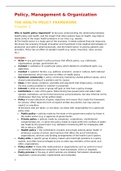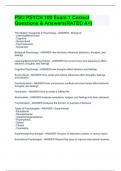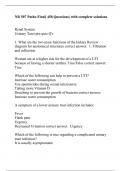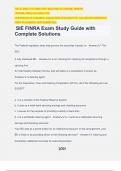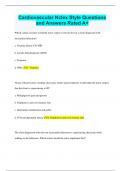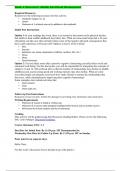Samenvatting
Summary of Book Buse, Mays & Walt (2012) PMO Lectures
- Instelling
- Vrije Universiteit Amsterdam (VU)
- Boek
- Making Health Policy
Samenvatting colleges Policy, Management & Organization in Master Health Sciences International Public Health samenvatting boek 'Making Health Policy' van Kent Buse et al. (2012) hoofdstuk 1 t/m 9. Summary of lectures Policy, Management & Organization in Master Health Sciences International Publ...
[Meer zien]
